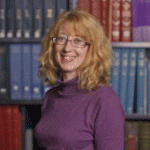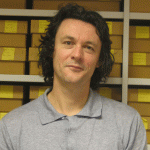(Re)Presenting the Archive – Question 3
By
Sophie Baldock, Matthew Cheeseman, A. S. G. Edwards, James Mussell, Clare Scott, Ian Trowell
March 2014
3How do you reconcile originality or creativity with values and practices often central to archival representation such as “authentic” or “faithful” representations of source materials and respect des fonds?
One of the most challenging questions for archivists working with born-digital materials is how to reconcile an archive’s born-digital form with existing and entrenched methods of archival arrangement and representation, which in most cases were conceived with paper records in mind. In my view, archivists must develop new and creative strategies to represent the contents of born-digital archives to researchers who wish to use them and need a guide to their contents. These strategies may not always fit easily with traditional archival values and practices.
Read this ResponseAs before, this depends on intention: whether the aim is limited to faithful transcription of an original (or originals) or whether it seeks some more interventionist engagement with these materials.
Read this ResponseThis question implies that authenticity depends upon a form of mechanical reproduction, in which mediating editors and curators passively let the source objects somehow write themselves into new media without getting in the way. In these terms, creativity is to be avoided as it permits an eruption of illegitimate agency, where whoever is doing the representing imposes him or herself upon the representation under his or her supervision.
Read this ResponseFrom the point of view of our archival collections at the National Fairground Archive (NFA) we are in a slightly different position than archives that might feature a collecting focus based on a named person or organization (company, local authority, etc.). In those cases it is important to maintain a reference to order of accrual, as this order gives further insight into either the creative processes of the person (for example, an author with whom the archive is associated) or the business and organizational methodologies of the organization (if it is a company-style archive).
Read this Response



